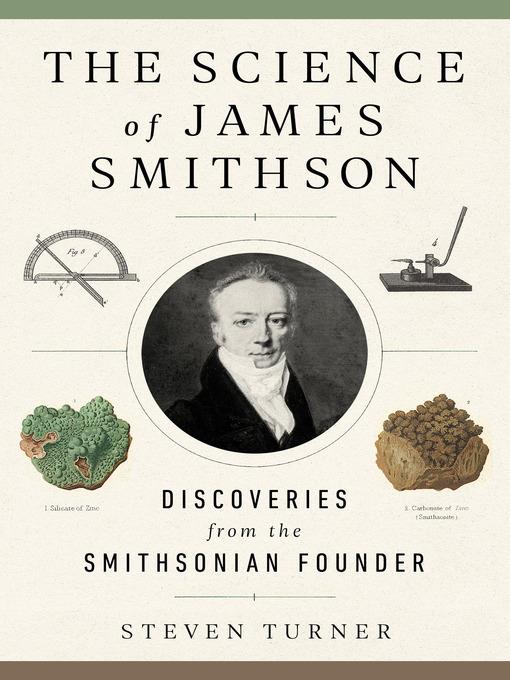
The Science of James Smithson
Discoveries from the Smithsonian Founder
کتاب های مرتبط
- اطلاعات
- نقد و بررسی
- دیدگاه کاربران
نقد و بررسی

September 15, 2020
An assessment of the scientific achievements of the man whose surprise, never-fully-understood benefaction to the government created the Smithsonian Institution, now "the largest museum complex in the world." Along the way offering a biography of James Smithson (1765-1859), about whose life scant evidence remains, Turner concentrates principally on the experimental contributions by this "accomplished analytical chemist." During Smithson's era, "natural philosophy," the ordinary science of its time, was breaking apart into today's more specialized disciplines of chemistry, geology, mineralogy, and botany, all of which Smithson helped move forward. A multifaceted figure educated in an older tradition, Smithson adjusted to the rapidly evolving world of deductive research and, via associations throughout his native Britain and Europe, significantly advanced a number of the emerging sciences. After rerunning Smithson's experiments, a substantial feat in its own right, Turner, a historian of science and emeritus curator of physical sciences at the Smithsonian National Museum of American History, convincingly refutes the charge that his subject was an "aristocratic science dabbler," a charge largely based on his interest in practical applications, such as improving the process of coffee-making. While Turner's experiment-by-experiment, article-by-article analysis can be tedious and principally of interest to historians of the sciences of Smithson's era, the author makes a convincing case that his wide-ranging studies should be considered significant scientific achievements for their time. A never-married man, Smithson left his considerable fortune to his childless nephew. After that relative predeceased Smithson, upon his death, Smithson's estate (worth a then-massive sum of $500,000), by direction of his will, was transferred to the U.S., a country he had never visited. By decision of Congress, his gift created the institution that bears his name, one dedicated grandly to "the increase and diffusion of knowledge." Solid insight into the work of a man whose gift undergirds one of the most important U.S. institutions of learning.
COPYRIGHT(2020) Kirkus Reviews, ALL RIGHTS RESERVED.

November 1, 2020
Science historian Turner (emeritus, curator of physical sciences, Smithsonian National Museum of American History) explores the life and work of James Smithson, the founding donor of the Smithsonian Institution through his bequest to the United States for "an establishment for the increase and diffusion of knowledge among men." Smithson, a wealthy English chemist and mineralogist, was long thought to be a scientific dabbler, but Turner's examination of Smithson's scientific papers and the response to them proves he was a respected chemist of his time, elected as a fellow to the Royal Society at the age of 22, whose work was eclipsed by later scientific advances. Turner weaves biographical facts about Smithson through well-researched discussions of the subjects of his published papers, which range from detailed chemical analyses of various substances to ice crystals to making an inexpensive, but accurate, scale. VERDICT Seamlessly intertwined with information about scientific and social developments in Europe in the late 18th and early 19th centuries, including facts about important names in geology, chemistry, and mineralogy, this welcome guide will engage readers of science biographies and the history of science.--Sue O'Brien, Downers Grove, IL
Copyright 2020 Library Journal, LLC Used with permission.

November 9, 2020
Turner, curator emeritus of physical sciences at the Smithsonian National Museum of American History, offers a detailed account of the life and work of James Smithson (1765–1829), an English chemist who willed his wealth to the U.S. government for the creation of “an establishment for the increase and diffusion of Knowledge among men”: the Smithsonian Institute. By the time Smithson’s bequest reached Washington, D.C., in 1835, his work in chemistry and minerology had been largely forgotten, lost beneath newer discoveries. Born to wealth, Smithson attended Oxford in the 1780s, “a golden time for English science,” and worked with celebrated scientists including chemist Joseph Black, physicist Henry Cavendish, and geologist James Hutton. Smithson’s curiosity ranged widely: he studied mineral samples gathered deep inside a Scottish coal mine, dated fossil remains, and analyzed ancient Egyptian pigments. Near the end of Smithson’s life, he shifted his focus to those “outside of the scientific community,” which Turner attributes to London’s Mechanics Institutes, created to educate the working class; this Enlightenment belief, that science should “better the human condition,” Turner notes, is likely what led Smithson to will his fortune to the Smithsonian. Curious readers will appreciate this accessible look at the work of a thoughtful, idealistic scientist.

























دیدگاه کاربران